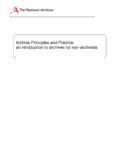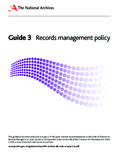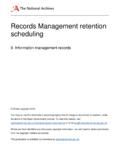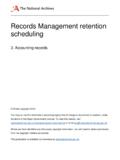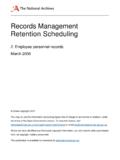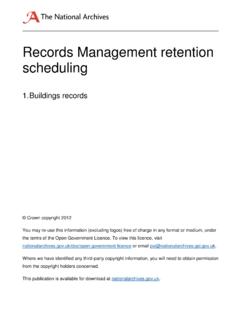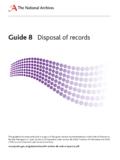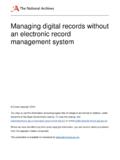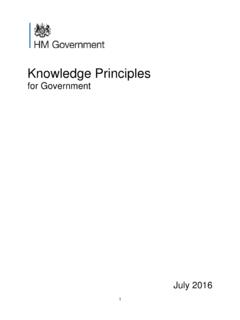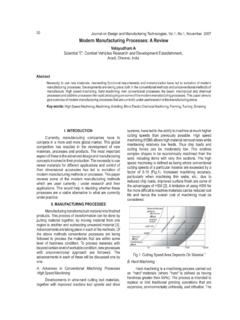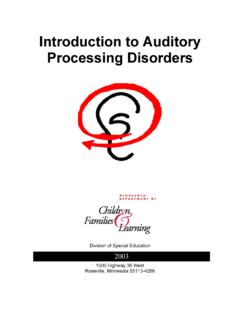Transcription of What is an Information Asset Register? - The National Archives
1 February 2017 What is an Information Asset Register? The value of an IAR An IAR is a key tool for fully exploiting your organisation s Information assets it helps identify areas of duplication and encourages greater efficiency. It can be used to spot areas of potential risk loss of personal data. By understanding the nature of your Information and where it s held, you can manage these risks more easily. Creating an IAR Your organisation may already have an old IAR or other Asset list which you can adapt. If not, start by listing all of the Information assets you can think of, noting down what each one does and where it s kept.
2 Your first draft may not be a complete record of every Asset held by your organisation but an approximate list on which you can build. Identifying key assets Think about what would happen if you lost the availability of each of the assets in your list. If the consequences are severe your organisation couldn t function without it this means it s a key Asset . These are critical to your organisation but don t always contain the most sensitive Information . Include key assets as a column on your IAR so they can be identified quickly. Describing assets There are a number of useful fields which should be recorded on your IAR how long assets should be retained, who can access them and whether they contain personal data.
3 Assets can be described and managed at a system level if the Information contained within the system is the same a purchase order database. If your systems contain various types of Information with different values, risks and sensitivities, each should be noted as a separate Information Asset . Identifying owners of the Information Asset Each Asset should have an Information Asset Owner (IAO). This is the individual responsible for ensuring that the risks to, and the opportunities for, the Asset are monitored. The IAO doesn t need to be the creator or the primary user of the Asset , but they must understand its value to the organisation.
4 See also the Cabinet Office s Guidance on IAOs. Maintaining and updating IAR Keeping your IAR simple will encourage regular updating use our template as a guide. We recommend that the IAR is reviewed at least once a year, but ideally IAOs should review the assets they are responsible for every six months to keep the IAR relevant. This works best if the IAR is fully integrated into your governance structure. Define a permanent owner of the IAR itself (rather than the Information described within it) who will set out maintenance requirements. If a department has prepared an Information Asset register for the Re-use of Public Sector Information Regulations 2005, it should publish the contents.
5 An Information Asset Register (IAR) is a simple way to help your understand and manage your organisation s Information assets and the risks to them. It is important to know and fully understand what Information you hold in order to protect it and be able to exploit its potential. For more Information contact the Information Management team at The National Archives

